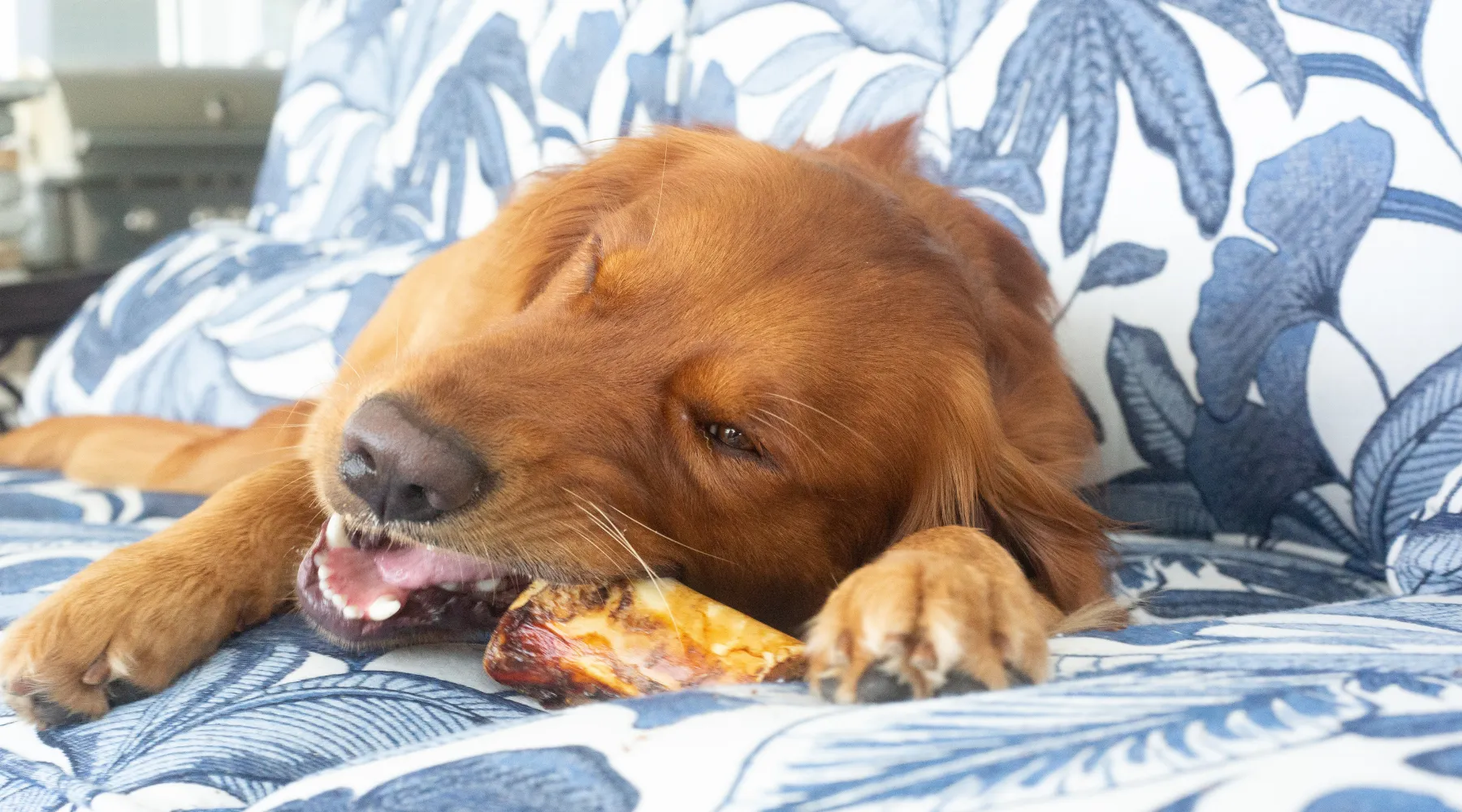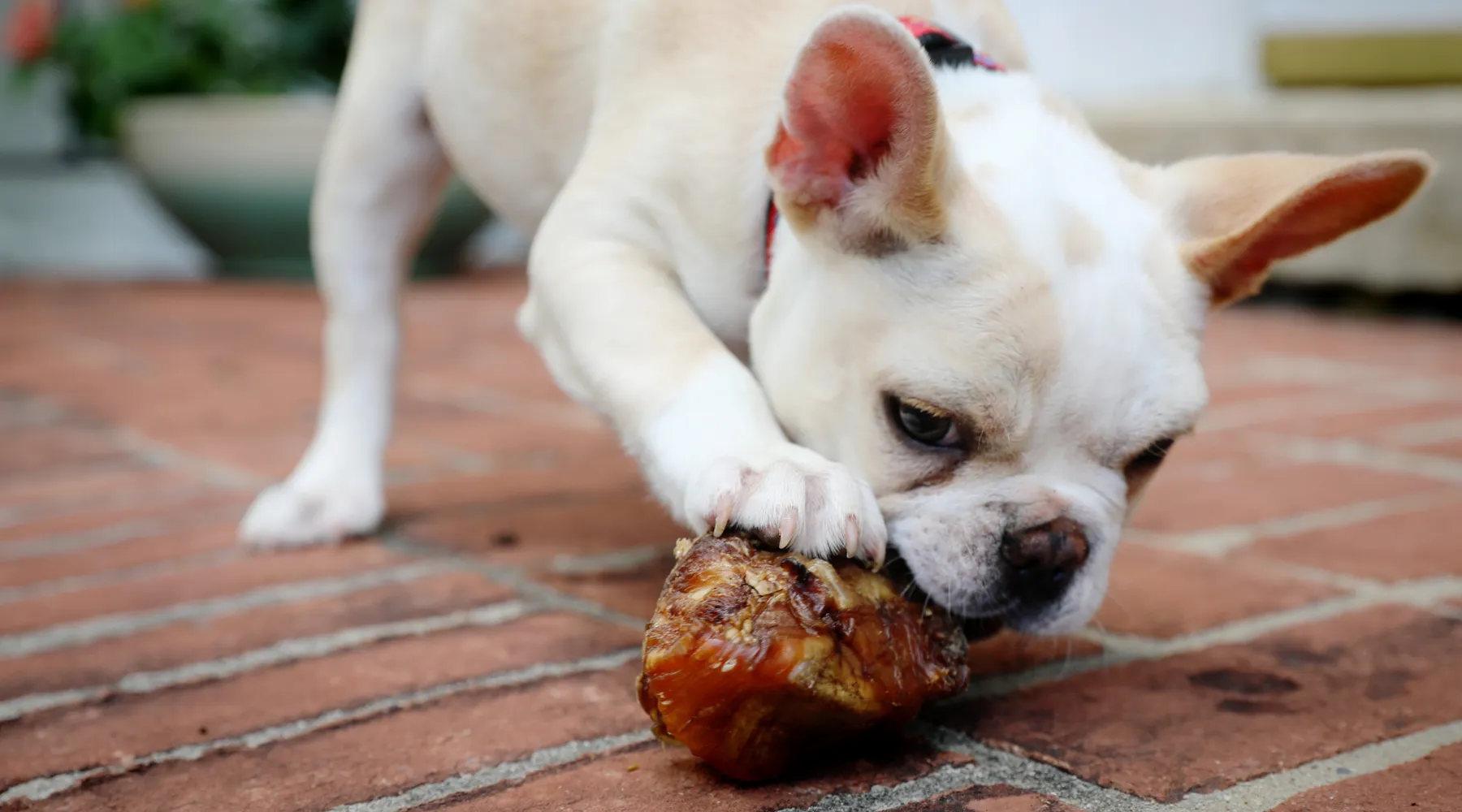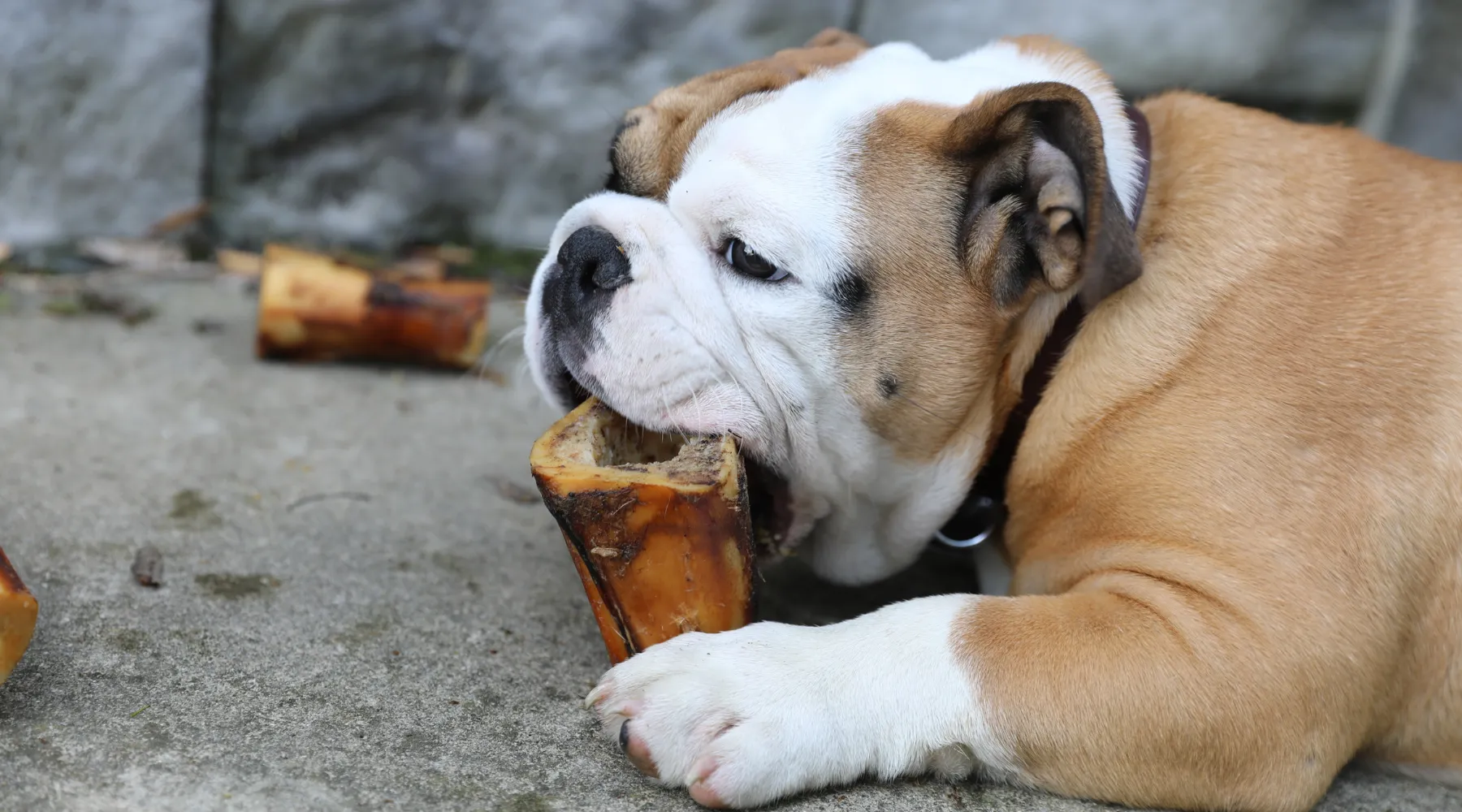As a devoted dog owner, ensuring your canine companion’s safety and well-being is paramount. For those with dogs who possess a powerful urge to chew, the search for appropriate chew toys and bones can be a daunting task. Aggressive chewers can quickly dismantle most standard chew toys, potentially leading to hazards like choking or ingestion of dangerous fragments. This guide delves into the critical aspects of selecting Safe Dog Bones For Aggressive Chewers, offering insights and recommendations to keep your furry friend happy and secure.
Understanding the Risks of Inappropriate Chews
Before exploring safe options, it’s essential to understand why many common chew items are unsuitable for dogs with a strong chewing drive. Aggressive chewers require durability and a composition that doesn’t easily break down into sharp or ingestible pieces.
1. Rawhide: A Cautionary Tale
Rawhide chews are ubiquitous in pet stores, but they often pose significant risks for aggressive chewers. Their primary function is to be chewed and eventually consumed, which is precisely where the danger lies.
- Choking Hazard: Rawhide can soften and break into large, pliable chunks that can easily become lodged in a dog’s throat, leading to a severe choking incident.
- Digestive Complications: The digestive system of dogs can struggle to process rawhide. Ingested pieces can lead to blockages in the stomach or intestines, often requiring emergency veterinary intervention.
- Chemical Processing: The manufacturing process for rawhide often involves chemicals that can be harmful if ingested by your dog.
- Limited Nutritional Value: Despite their popularity, rawhide offers very little in terms of essential nutrients. Its primary components are often just processed animal hides.
While the intention behind rawhide is to provide a chewing outlet, its tendency to break apart makes it a poor choice for dogs that are determined to destroy their chews. For those seeking durable alternatives, exploring safe hard chew toys for dogs is a wise step.
2. Synthetic Dog Bones: More Than Meets the Eye
Synthetic bones, typically made from materials like nylon, rubber, or plastic, are often marketed as durable alternatives. Some may be fortified with vitamins or dental additives. However, they are not without their drawbacks.
- Artificial Ingredients: Many synthetic chews contain artificial flavors, colors, and preservatives that are not ideal for a dog’s diet.
- Durability Variability: While some synthetic bones are robust, others can still break down under the relentless force of an aggressive chewer. Ingested plastic or nylon fragments can cause internal damage.
- Lack of Natural Nutrition: Unlike natural bone chews, synthetic options provide no inherent nutritional benefits unless specific additives are incorporated.
The concern with synthetic materials is the potential for dogs to ingest non-digestible microplastics or nylon, which can accumulate in their system and lead to health issues. It’s important to consider toys for dogs that chew up toys with materials that are safer if ingested in small quantities or are naturally digestible.
3. Wood Pulp Bones: A Natural Misstep
Bones made from wood pulp, often presented as a natural alternative, have some redeeming qualities due to their natural origin. However, they still fall short for aggressive chewers.
- Splintering Risk: Similar to actual sticks, wood pulp can splinter when chewed aggressively, posing a risk of injury to the mouth, throat, or digestive tract.
- No Nutritional Value: Wood pulp, primarily cellulose, provides no nutritional benefits. It’s essentially a filler material.
While not as dangerous as some other options, these are not a substitute for truly safe and beneficial chew items.
4. Raw Dog Bones: Proceed with Extreme Caution
Raw, unprocessed bones, such as beef marrow bones, seem like a natural choice given their origins. Dogs in the wild do consume bones. However, for domesticated pets, especially those with strong chewing habits, raw bones present several significant risks.
- Bacterial Contamination: Raw bones can harbor dangerous bacteria like Salmonella and E. coli, posing a risk of infection to both dogs and humans. This makes them a potential hazard if your dog plays with them indoors or interacts closely with family members after chewing.
- Choking and Splintering: Despite being natural, raw bones can still splinter or break into sharp fragments. These pieces can cause choking, lacerations to the mouth and gums, or internal damage to the esophagus and intestines.
- Digestive Upset: The density and composition of raw bones can be difficult for some dogs to digest, potentially leading to constipation or more serious gastrointestinal blockages.
 Dog bones for large dogs aggressive chewers.
Dog bones for large dogs aggressive chewers.
5. Cooked Bones: A Brittle Danger
Cooked bones, including those from boiled bone broth, are generally considered even more dangerous than raw bones. The cooking process, especially at high temperatures, makes bones brittle.
- Tooth Damage: Cooked bones are often too hard and can fracture a dog’s teeth.
- Splintering: When brittle, cooked bones shatter into sharp shards, increasing the risk of internal injuries.
While some professionals might prepare cooked bones in a way that mitigates these risks, the average home preparation is not recommended for dogs, especially aggressive chewers.
6. Conventionally Raised Beef Marrow Bones: Ethical and Nutritional Concerns
Even when considering marrow bones from conventionally raised cattle, there are underlying issues that impact their suitability as a safe chew.
- Factory Farming Practices: Cattle raised in confined, unsanitary conditions and fed unnatural diets can lead to an overall lower quality of meat and bone.
- Less Healthy Fat Profile: Conventionally raised beef tends to have a higher proportion of saturated fats and fewer beneficial omega-3 fatty acids and Conjugated Linoleic Acid (CLA) compared to grass-fed alternatives.
- Inferior Nutritional Profile: Grass-fed beef generally boasts higher protein, iron, and essential vitamins and minerals, with a more balanced fat composition.
For these reasons, focusing solely on the origin of the bone material is crucial.
The Ultimate Choice: Properly Prepared Grass-Fed Marrow Bones
After careful consideration and extensive testing, the most recommended safe dog bones for aggressive chewers are properly prepared grass-fed marrow bones. These offer a superior combination of safety, nutrition, and durability.
 Beef Marrow Bones for Large Dogs
Beef Marrow Bones for Large Dogs
Here’s why they stand out:
- All-Natural Composition: They contain no artificial preservatives, colors, or questionable additives, providing a pure and natural chewing experience.
- Optimal Density: These bones are tough enough to withstand vigorous chewing but not so hard that they pose a significant risk of fracturing teeth.
- Superior Nutrition: Naturally rich in collagen, glucosamine, chondroitin, healthy fats, vitamins, and minerals, they contribute to joint health, skin and coat condition, and overall well-being.
- Professional Slow-Cooking: Low-temperature, slow-cooking methods preserve nutrients and prevent the bone from becoming brittle or prone to splintering.
- Dental Health Support: The act of chewing helps to naturally clean teeth by reducing plaque and tartar buildup, while also massaging the gums.
- Mental Stimulation: Gnawing is a fundamental instinct for dogs, providing mental stimulation, reducing stress, and promoting a sense of security and contentment. This is why looking for interactive dog toys for aggressive chewers can also be beneficial for their mental well-being.
Tailoring Safe Chews to Your Dog’s Size
Just as with any dog accessory or food, the size and strength of your dog are critical factors in choosing the right chew bone.
Small Dogs (up to 15 lbs):
For smaller breeds, opt for smaller femur slices or kneecaps. These are appropriately sized to prevent them from overwhelming the dog’s jaw while still providing an engaging chew.
 Beef Knee Cap Bones for Dogs
Beef Knee Cap Bones for Dogs
Consider single-ingredient, small bones specifically designed for their size. These often hold up well and are less likely to splinter. Always ensure the size is appropriate to prevent accidental swallowing.
Medium Dogs (16–50 lbs):
Medium-sized dogs benefit from center-cut marrow bones that are neither too thick nor too soft. This “Goldilocks” balance ensures a satisfying and durable chew.
 Filled Dog Bones for Medium Dogs
Filled Dog Bones for Medium Dogs
A bone that can withstand repeated gnawing for a significant period without breaking down is ideal. This type of chew can keep them happily occupied for an extended time.
Large Dogs (50+ lbs):
For powerful chewers and larger breeds, large knuckle or shank bones are the best choice. These are specifically engineered to endure the intense chewing of big dogs.
 Beef Marrow Bones for Large Dogs
Beef Marrow Bones for Large Dogs
These larger bones offer substantial density and longevity, providing a safe and satisfying chewing experience that can last through multiple sessions. Choosing dog chew toys for large dogs with similar durable qualities is essential. For extreme chewers, investigate best dog toys for dogs that chew through everything.
Safety First, Always
Regardless of the type of chew bone you select, it is crucial to supervise your dog while they are chewing. Regularly inspect the bone for signs of wear and tear. When a bone becomes too small to be safely handled or shows significant degradation, it’s time to discard it. Prioritizing your dog’s safety will ensure their chewing time remains a positive and healthy experience.
Disclaimer: This article may contain affiliate links. If you make a purchase through these links, we may earn a small commission at no extra cost to you. We only recommend products that we trust and believe will benefit you and your canine companions.
